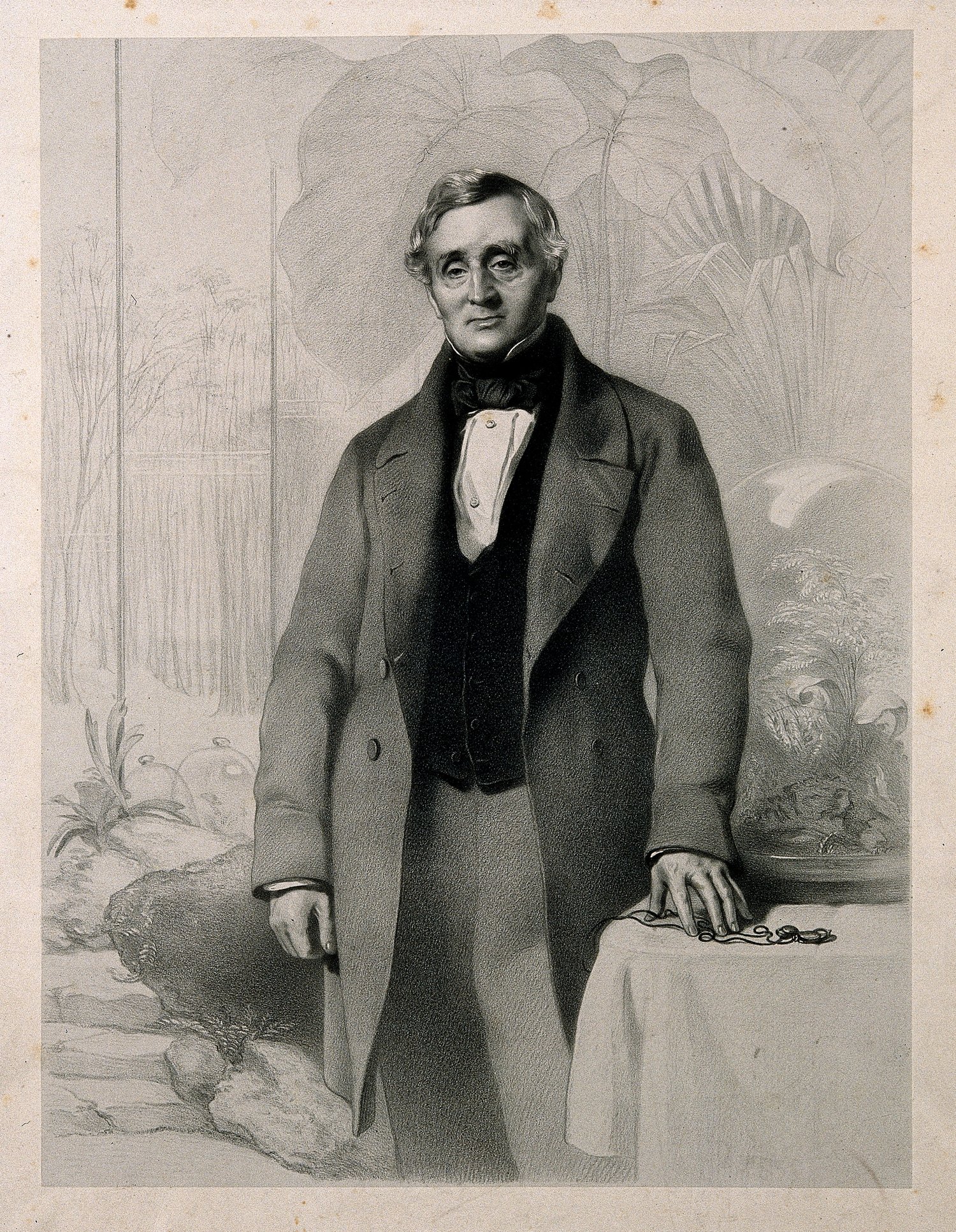Nathaniel Bagshaw Ward
Let’s step back into the choking mists of time. Nathaniel Bagshaw Ward’s Victorian London was a suffocating place. Polluted and grimy, this was not the place for Nathaniel, a physician by profession, to indulge his passion for botany. Over the years, he had attempted to grow ferns in this environment with very little success.
Nathaniel lived in London’s East End, on Wellclose Square, a short distance from my current studio in Shoreditch. I imagine him walking the same streets, observing, hypothesizing and pondering the outcome of his botanical experiments.
Nathaniel’s penchant for plants would eventually result in the invention of the Wardian case, a precursor to the terrarium as we know it today. I may be jumping ahead of myself here and perhaps I should describe the incident that sparked this particular discovery.
Nathaniel was out for a stroll in the Kent countryside one day in 1829, when he discovered the pupa of a Hawkmoth. He placed the cocoon; along with the organic matter to which it clung, into a hermetically sealed jar and waited for the moth to pupate. However, little is known about the fate of the moth, as the fern that sprouted and thrived in the jar eclipsed its meager existence.
An uncontaminated atmosphere, moisture, and the appropriate light provided the ideal environment for plant growth. This would prompt Nathaniel to put pen to paper and write to Sir W.J. Hooker, first director of the Royal Botanic Gardens at Kew, informing him of this discovery.
Nathaniel’s finding was perfectly timed, given the Victorians’ burgeoning interest in exotic plants and ferns, as it would allow them to be protected from city air pollution. This obsession for ferns or Pteridomania invaded all aspects of life. As well as the living species being displayed in homes [in Wardian cases], fern motifs and designs were commonplace on carpets, curtains and wallpaper. Even custard cream biscuits couldn’t escape the design of a fern’s fronds being stamped onto them.
The good doctor’s breakthrough and invention of the Wardian case changed botany and plant exploration. It allowed for explorers to safely transport plants back to Kew and elsewhere from their expeditions. Wardian cases protected plants from salt water and rodents, keeping them sealed and contained in their own biosphere.
Growing plants under glass became fashionable again in the 1960’s and 1970’s with the creation of the Bottle Garden. This new imagining of the terrarium required a skill for wiggling plants through thin bottlenecks and the patience of a saint.
The terrarium remains a beautiful way of bringing the outdoors inside, providing the conditions essential for a moisture-loving, tropical garden to flourish within our dry, centrally heated homes.
Image of a horticulturalist packing plants into a Wardian Case ready for transportation.


